Written with contributions by Shelby Pritchard, former SDSU Extension Pest Management Specialist.
Originally Submitted: June 21, 2022
Whether scouting for pests in crops or in a garden, chances are you’ve encountered a long-legged fly and didn’t even know it! Many species are metallic in color and resemble small, shiny gems. Long-legged flies are in the family Dolichopodidae within the order Diptera (true flies). It is a very large group with approximately 1,300 species in North America alone. Long-legged flies are predators of many different pest insects, making them beneficial to have around.
Long-Legged Fly Identification
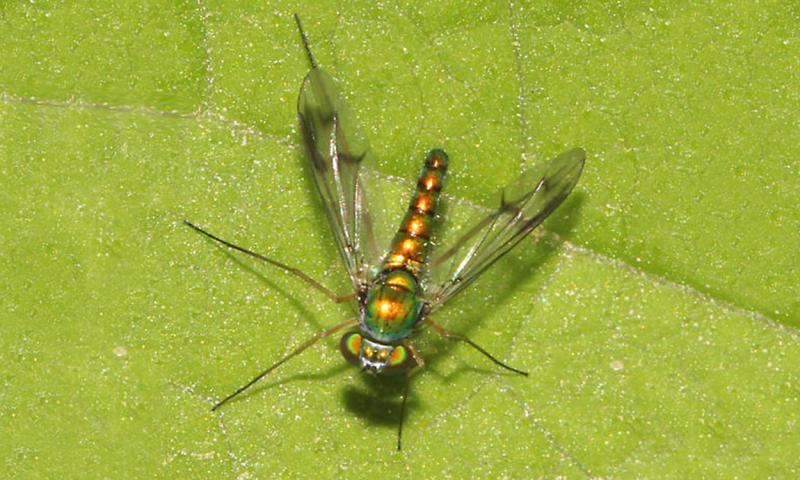
Long-legged flies are true flies, meaning that they undergo complete metamorphosis (i.e. egg, pupa, larva, adult). However, most people only ever observe the adult stage. Many species of long-legged flies have a metallic sheen in varying colors (i.e. green, copper, red, blue, gold) that make them look like little mobile gems (Figure 1). There are some species that are a little less flashy and range in color from brown to black or yellow (Figure 2). They are small to medium in size, but most are less than ¼ of an inch in length.
Long-legged flies have long, slender legs, a pair of clear wings that typically have a smoky pattern near the tips, and an abdomen that tapers towards the rear. They also possess short, hair-like antennae, large iridescent eyes and short mouthparts used for piercing prey and extracting fluids (Figure 3).
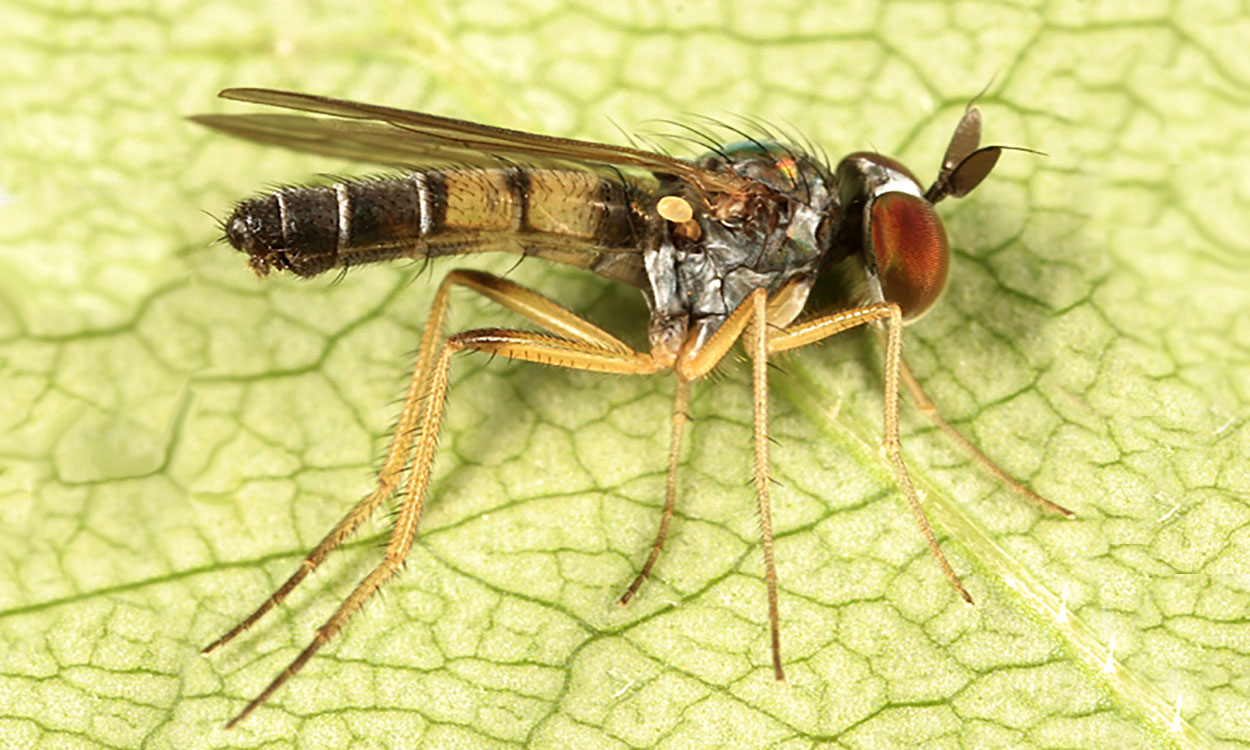
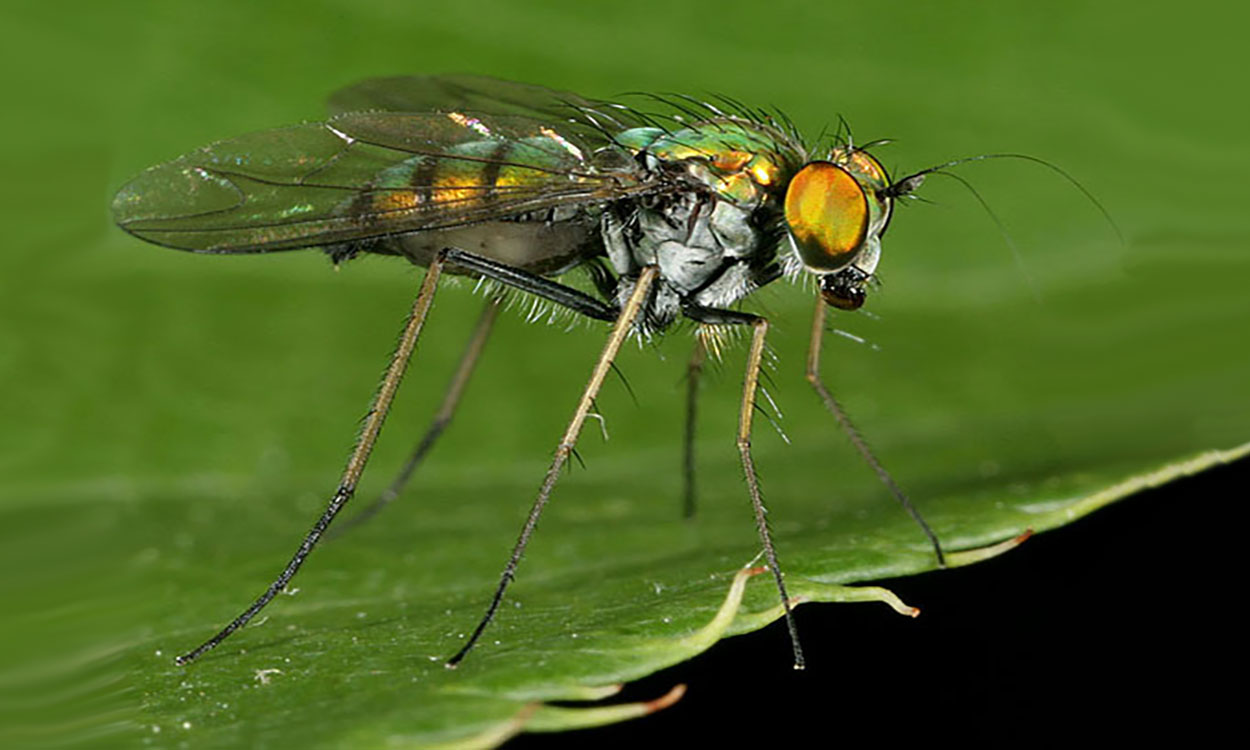
Life Cycle
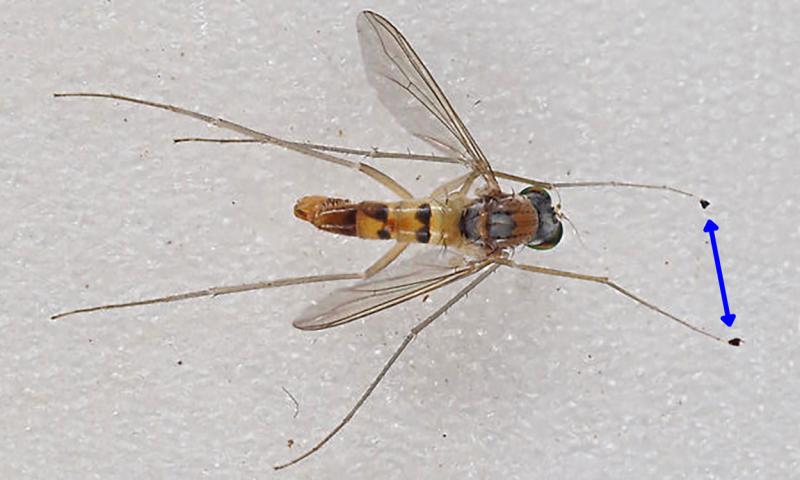
As mentioned previously, long-legged flies have an egg, larva, pupa and adult stage. Prior to eggs being laid, adults have unique and sometimes elaborate mating behavior. Some species of males have enlarged appendages on their front legs (i.e. “flags,” scales, hairs) and wave them around to try and attract a mate, while others use the unique wing patterns (Figure 4).
Once eggs are laid and hatched, larvae (maggots) will develop and undergo multiple growth stages (i.e. instars). The larvae are creamy white in color and lack a distinguished head (Figure 5). Once larvae are mature, they create cocoons that are pieced together out of particles of soil and pupate (Figure 6). After pupation, adults emerge, and the cycle begins again.
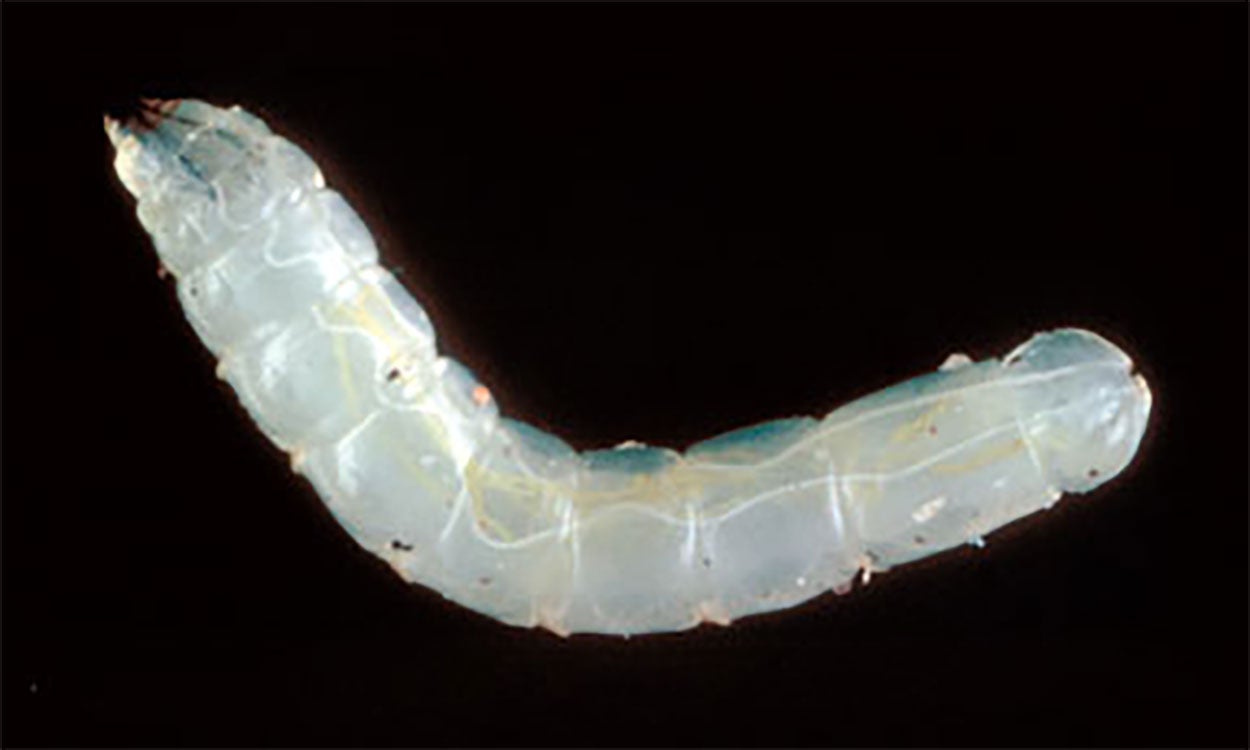
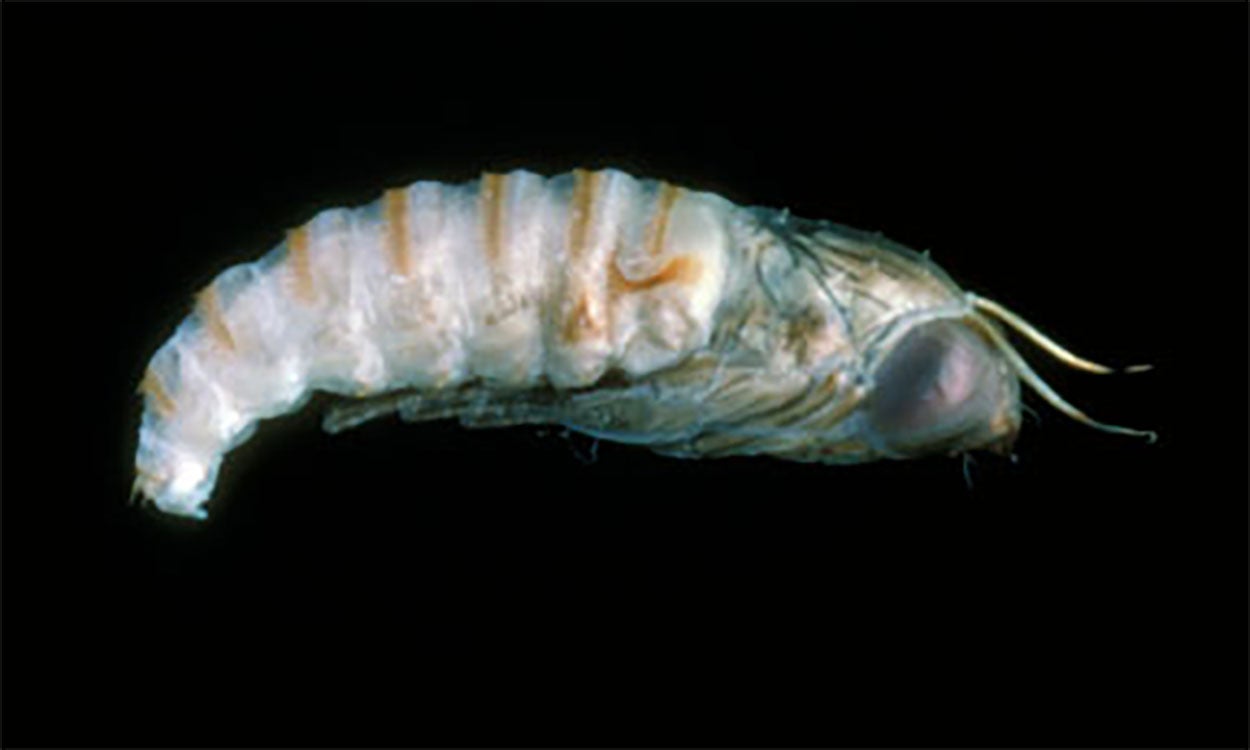
Habitat and Feeding Behavior
Long-legged fly adults are predators that feed on gnats, bark beetles and mites. They also feed on common pests, such as aphids, thrips and mosquitoes. The adults can be found in a wide variety of habitats, such as gardens, meadows and landscapes near water margins. In these habitats, adults can commonly be found perched on partially shaded vegetation searching for prey. Once prey is captured, they use their mouthparts to hold, pierce and extract internal fluids. Long-legged fly larvae are commonly found near semi-aquatic landscapes, while others can be found under tree bark or mulch. Larvae are thought to be predaceous on small insects in the soil, as well as scavengers.
Management
Long-legged flies do not bite and are not known to spread any sort of diseases. They provide essential biocontrol of garden and yard pests and should be encouraged in the landscape. Simple ways to draw in long-legged flies as well as other natural enemies is to plant a variety of plants (preferably native), ensure overwintering sites are available, and avoid the use of insecticides whenever possible.


